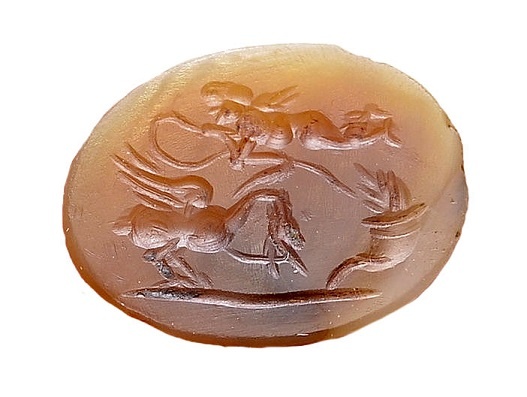

Gross, Anthony, Etching, engraving, & intaglio printing. On the bench in front of him are his tools, including the burin, a sharpening stone and a double-ended etching needle. The design is very similar to those of playing cards. Inscription in eight lines to the left and right of the image.
#Gem intaglio free#
Letters in the free field, above the head of the figure. The wrists are tied to the cross, feet held as if hanging in the air, bearded head with long hair in profile to left. Side A: Crucified figure on a tall cross with a short base. It shows Solis as an engraver, holding a burin and working on a metal plate. Magical gem intaglio green-brown jasper oval bevelled edge on side B. Balthasar Jenichen, created a portrait of artist and printmaker, Virgil Solis, in the year of Solis’ death.
#Gem intaglio manual#
Stijnman, Adrianus, A history of engraving and etching techniques: Developments of manual intaglio printmaking processes, 1400-2000. As both artist and engraver, he could connect more directly with his audience, and his books, with their co-existent and cohesive images and text, facilitated a transfer knowledge which was particularly meaningful – the kind arguably obtained only where author and illustrator were one and the same. The talent of these early print engravers was not lost on 17th and 18th century successors such as William Hogarth and William Blake, the latter of whom really renewed the art of bookmaking and printing by etching and engraving his own illustrations to accompany his own text. His engraved print, ‘Battle of the seas gods’, with its subtle gradations of light and shadow and its dynamism, undoubtedly inspired the later engravers, Marcantonio Raimondi, who produced engraved copies of Renaissance painter, Raphael’s works, and Albrecht Dürer, whose ‘Knight, death and the devil’ and ‘Saint Jerome in his study’ pieces stood him apart, virtually from all others. In Italy, painter Andrea Mantegna, who had turned his hand to engraving, earned widespread acclaim for his clarity and boldness of image. By the 16th century, though, some names had become synonymous with fine line engraving. As Anthony Gross points out in his Etching, engraving, & intaglio printing, most were known to us by their work only, historians having invented names for them based on their prints – ‘Master of the Playing Cards’, ‘Master of the Garden of Love’ and ‘Master of Saint John the Baptist’. We are fortunate to know their names, since so few early engravers have been identified. It would be almost a century later, in 1562, when the first depiction, by Balthasar Jenichen, of an engraver at work on a copper printing plate appeared. Though engravings on metal emerged as early as the 1430s, the earliest illustrated act of engraving on a metal plate appeared in c1465, when Baccio Baldini engraved a goldsmith at work on a flat, rectangular plate in his shop.

It likely found its origin in the workshops of the gold- and silversmiths, where the craftsmen not only used the method to decorate and inscribe their metalwork, they generated printed impressions as a means of recording it.

Line engraving, with its prints comprised of incised lines, was the most widely adopted, and probably earliest, method of intaglio engraving.


 0 kommentar(er)
0 kommentar(er)
